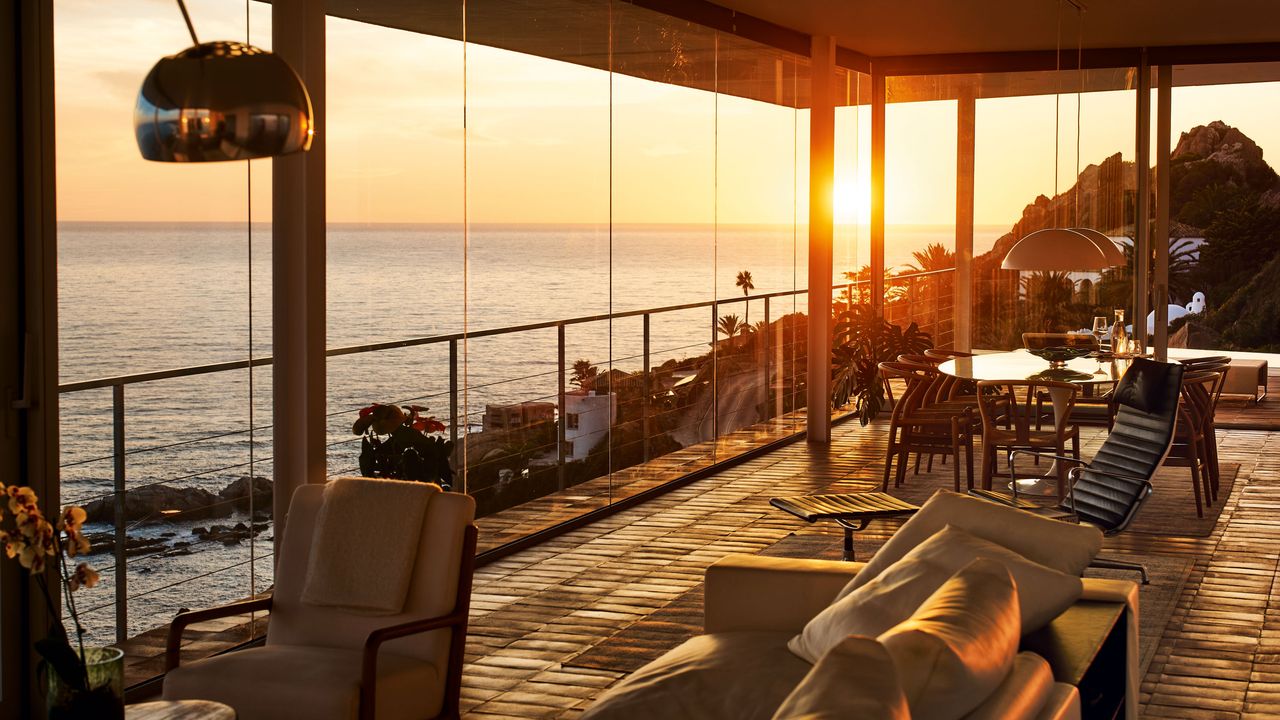By the time we get to the 60-year-old palo cortado, personal anecdotes are being shared in the group. “Taste the dark brown chocolate, the yogurt-ness,” Moreno growls with appreciation. “This is the best fino in the world; a difficult beast to tame.”
If Pizarro is Andalusia’s Extremadura émigré number one, then our guide, a chatty and much-adored environmentalist, is number two. His name is John Carlos Milburn Rodríguez (his father is English) and he’s here to take us to the wild. The sandstone ranges of Los Alcornocales hunker between the earthy Cádiz and brassy Málaga provinces, and never the twain shall meet. They are a rainy, riverine buffer for the stormy sea winds, which cast a lacy mist over the treetops. We hike through a pristine river valley in the oak groves of San Carlos del Tiradero, past remnant clusters of cork oaks and along dappled dirt roads, to gaze out on forested ridges that unroll to cornflower skies where buzzards float.
El ChiringuitoØivind Haug
Bodega Manuel Aragón in Chiclana de la FronteraØivind Haug
By lunchtime, we reach the old Camino de Ojén, and arrive at Antigua Venta de Ojén, once the only shop in what is now a ghost hamlet. Luisa Martinez Ríos keeps it going, but only opens by request. Her parents and grandparents ran the shop in a village of subsistence laborers who made a living gathering charcoal and cork. She feeds us stewed roebuck with peas, and puchero con pringà, a meaty broth in which pig throat, fat and morcilla blood sausage are smashed into chickpeas. We eat in her garden, watched over by a bevy of goats, and chase the meal with Zoco, a blackthorn liqueur, and throat-ravishing black tobacco. This is the antithesis of the sleek fish plates of the coast. The simple cosy garden, her earthy warmth, the Black Madonna on the wall, the goats, the way she talks, the food—and how she procured it (off some farmers on a culling mission)—reminds me fondly of Cuba. I think about the families that crossed the Atlantic centuries ago from pockets of Andalusia exactly like this.
Sanlúcar de BarramedaØivind Haug
It’s not the first time I’ve felt misty this week. When we headed up to Casa Bigote in Sanlúcar de Barrameda, arriving for Sunday lunch, I had presumed the mustachioed guayabera-clad men and prim ladies with big pressed hair were sombre by nature. But during the course of the meal, we tickled the fancy of the clientele when we requested to photograph the three generations of the Hermoso family who ran the place, plus a handsome septuagenarian patron who was lurking quietly on the balcony, smoking. His wife then decided, whether in celebration or competition, to sing the jaleo—that hell-raising-flamenco call-and-response—with the senior Hermoso, Fernando, who turned out to have a great voice. The lady tickled her skirt above her knee as she took to the floor to cry out in passion and, soon enough, the whole restaurant erupted in clapping, foot-stomping, and catcalls. Did I see a tear in the eye of our Norwegian photographer, Øvind Haug, who had been spoiling to leave since we got there? “The beach can wait,” he mumbled.
Tuna tartare at El Cuartel del MarØivind Haug
Tuna stew at Iris ZaharaØivind Haug
It has been an intense week of richness. But back in Pizarro’s kitchen, the energy is calm and warm. Effortlessly and with zen, he multitasks, preparing an array of precision dishes while maintaining a stream of chat. He whips mint off the top of a gazpacho–“No!”–while reducing fish stock that’s been going for hours, giant cloves of garlic quietly building flavor with bay leaves, ruby-red beef tomatoes, oregano, fino, paprika, and cebolla vieja. He’s frying garlic prawns with chilli piquín pepper—“This will burn your fucking mouth.”—packing his famous prawn and hake croquetas, putting some ribs in the oven (“Eighty-five degrees for two hours; two to three hours at 110; 10 minutes at 220.”) and tackling tuna searing. We’ve bagged the chuleta: the ventrecha, tarantello (between the belly and the tail), and loin.





